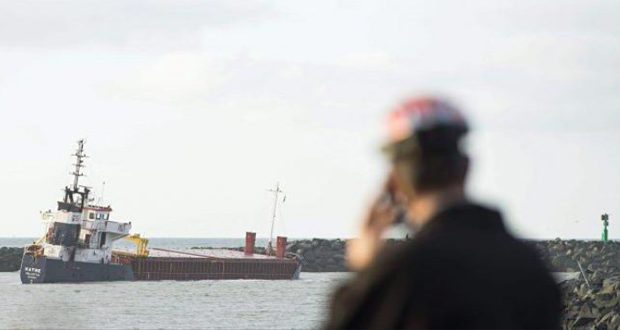Transport Malta has issued safety investigation report into the grounding of the Maltese registered general cargo KATRE in the approaches of Hvide Sande on 24 November 2014.
The incident
At about 1400 on 25 November 2014, the Marine Safety Investigation Unit (MSIU) was notified by the managers of the Maltese registered motor vessel Katre, that the vessel had run aground at about 1935 (UTC) on 24 November, while on a loaded passage voyage from Pärnu, Estonia to Hvide Sande, Denmark. The vessel ran aground as it was about to enter port without a pilot.
The vessel sustained substantial and serious damage to all of her double bottom tanks and bottom structure. She was subsequently refloated following a lightering operation to reduce her draught to an acceptable level in order for her to berth.
The safety investigation concluded that a number of factors linked to the prevailing environmental conditions had adversely affected the vessel’s entry into the port. The dynamic under keel clearance of the vessel was also reduced, resulting in the master losing control of the vessel and ultimately being set onto the South breakwater.
The MSIU has made a number of recommendations to Hansa Ship Management OU, the managers of Katre, aimed at improving the safety of navigation on board vessels under its management.
Immediate Safety Factor
- Katre’s dynamic UKC was reduced significantly due to the combination of the prevailing swell, the vessel’s motion (rolling) and squat. This reduction in the UKC would have resulted in the vessel’s poor response to helm and engine orders.
Latent Conditions and other Safety Factors
- The vessel’s passage plan did not consider the passage into Hvide Sande;
- The prevailing conditions, which contributed directly to the grounding of Kertu, were not addressed;
- The weather conditions were not accurately assessed at the anchorage;
- The swell and wind direction were not taken into account when determining the UKC prior to the ship’s entrance into shallow waters;
- Information on the reduction in draught (since heel was neither applied nor taken into consideration) and information on the weather conditions in and around the port limits were not available on board;
- The master was not familiar with the operation of the Navtex;
- Although this was the master’s first visit to the port, the vessel was not required to embark a pilot;
- Neither the echo sounder nor the Furuno radar was operational.
Other Findings
- Fatigue was not considered to be a contributing factor to this accident.
- The communications system between the bridge and engine-room was not suitable when the main engine and auxiliary machinery were running;
- The number of accidents reported to the MSIU suggest that the six identified ‘Quality Objectives’ in the Safety and Quality Management Manual, may have not been achieved over the past two years.
Read further details about the accident by clicking at the following investigation report issued by Transport Malta.
Source: Transport Malta





























































